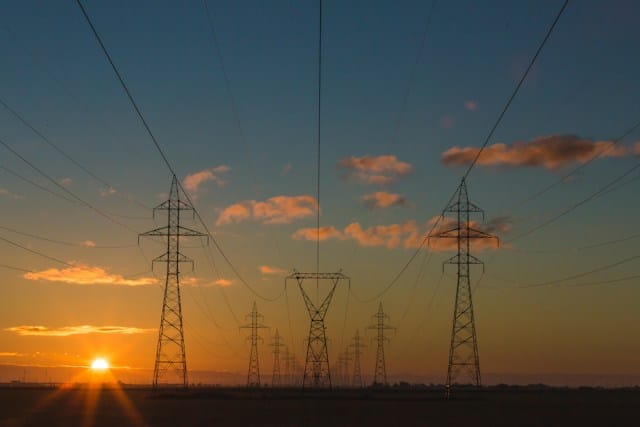How to reduce your energy consumption

Welcome! If you’re looking to shrink your energy bills and lighten your carbon footprint, you’re in the right place. This article is designed to provide easy, effective strategies to reduce your energy consumption. By implementing these tips, you’ll not only be saving money, but also contributing to a broader push for energy conservation, a crucial endeavor in these environmentally-conscious times.
Understanding Energy Consumption
Before jumping into specific strategies to reduce energy consumption, it’s important to understand what energy consumption entails. The term refers to the amount of energy used by households or businesses in their daily operations. This includes everything from electricity for appliances and lights, to fuel for heating and transportation. By understanding your energy consumption, you can identify areas for improvement and make informed decisions about your energy use.
Also read : Tips for preventing mold in your home
This section aims to help you understand the basic concepts of energy consumption. It will explain the different types of energy we consume, how they are measured, and why it’s critical to reduce our usage.
The Different Types of Energy
Energy is consumed in many forms. The most common types are electricity, gas, and fuel for transportation. Each type has a different impact on the environment and comes with its own strategies for reduction. Understanding these differences is the first step towards effective energy conservation.
Additional reading : The benefits of eco-friendly homes
How Energy is Measured
Energy is typically measured in kilowatt-hours (kWh) for electricity and therms or cubic feet for gas. To get a sense of your own energy consumption, take a look at your utility bills, which will show your usage in these units. By monitoring these figures, you can track your progress as you implement energy-saving measures.
The Importance of Reducing Energy Consumption
Reducing energy consumption not only saves you money, but also helps to combat climate change by reducing greenhouse gas emissions. With global warming becoming an ever-more pressing issue, every kilowatt or therm saved makes a difference.
Practical Steps to Reduce Energy Consumption
Now that you have a better understanding of what energy consumption involves, let’s explore some practical steps you can take to reduce your energy usage. This section will provide you with concrete, actionable tips that you can start implementing today.
Upgrade to Energy-Efficient Appliances
One of the most straightforward ways to reduce energy consumption is to upgrade to energy-efficient appliances. Look for appliances with the ENERGY STAR label, which indicates that the product meets strict efficiency guidelines set by the U.S. Environmental Protection Agency and the Department of Energy.
Insulate Your Home
A well-insulated home can significantly cut energy consumption by reducing the need for heating and air conditioning. Consider insulating your walls, roof, and floor, as well as upgrading your windows to double or triple glazing.
Use Energy Efficiently
There are also many simple behavioral changes that can reduce energy usage. This includes turning off lights when you leave a room, unplugging electronic devices when they’re not in use, and using energy-efficient settings on your appliances.
Renewable Energy Sources
Switching to renewable energy sources can significantly reduce your carbon footprint and, in some cases, your energy costs. This section will introduce you to various renewable energy options, their benefits, and how to adopt them.
Solar Power
One of the most popular forms of renewable energy, solar power, harnesses energy directly from the sun. This can be a cost-effective choice if you live in a sunny climate, as any excess power you generate can often be sold back to the grid.
Wind Power
Another renewable energy option is wind power. While wind turbines are more commonly used in commercial wind farms, smaller residential systems are also available for homeowners in windy regions.
Hydroelectric Power
Hydropower, the generation of electricity using flowing water, is a less common choice for residential use but can be an option if you have a stream or river on your property.
Changing Your Travel Habits
Transportation is another major source of energy consumption. This section will provide tips to reduce your energy use related to transportation, such as driving less, using public transportation, and considering electric or hybrid vehicles.
Drive Less
One of the most effective ways to reduce energy consumption from transportation is simply to drive less. Consider walking, cycling, or using public transportation whenever possible.
Use Public Transportation
Public transportation is a more energy-efficient way to travel, as it allows many people to travel together, reducing the energy consumption per person. Plus, you’ll avoid the stress of traffic and finding parking!
Consider Electric or Hybrid Vehicles
Electric and hybrid vehicles can be a good choice for reducing energy consumption, particularly if your power comes from renewable sources. While these vehicles can be more expensive upfront, they often result in lower operating costs over time.
Monitoring and Adjusting Your Energy Use
Finally, monitoring and adjusting your energy use is a crucial part of reducing energy consumption. This section will provide advice on tracking your energy use and making ongoing adjustments to continue improving your energy efficiency.
Monitor Your Energy Use
Keep a close eye on your utility bills to track your energy consumption. Many utilities also offer online tools to help you monitor your energy use in more detail.
Make Ongoing Adjustments
Don’t be disheartened if you don’t see massive savings immediately. Reducing energy consumption is an ongoing process, and even small improvements can add up over time.
Remember, every effort to reduce energy consumption counts. By taking these steps, you’re not only saving money, but also helping to protect our planet. So start today, and see how much of a difference you can make!
Planting Trees and Reducing Energy Consumption
Introducing green elements to your surroundings, like planting trees, is another significant step towards energy conservation. Trees and greenery offer natural shade and windbreaks, reducing the need for air conditioning and heating, thus lessening your energy consumption.
Importance of Trees
Trees have long been known as excellent carbon absorbers. A single tree can absorb as much as 48 pounds of carbon dioxide per year, and in a lifetime, it can sequester one ton of carbon dioxide. By converting carbon dioxide into oxygen, trees help clean the air and combat climate change. Moreover, trees also provide shade and act as windbreaks, reducing the need for air conditioning and heating, which are significant contributors to household energy consumption.
Planting Trees for Energy Conservation
Planting trees strategically around your home can prove beneficial in reducing your energy costs. Deciduous trees, which lose their leaves in the winter, can provide shade in the summer and allow sunlight in the winter, reducing the need for heating and cooling. Evergreen trees, on the other hand, can act as windbreaks, blocking cold winter winds and reducing the need for heating.
Caring for Your Trees
Planting trees is just the beginning; it’s essential to care for them to ensure they grow healthy and continue to provide the benefits mentioned previously. This includes regular watering and occasional pruning to maintain their shape and health.
Conclusion: Making a Difference
Reducing your energy consumption is not just about saving money on your utility bills, but it’s also about making a conscious effort to combat climate change. By monitoring your energy use, making your home more energy-efficient, switching to renewable energy, changing your travel habits, and planting trees, you can significantly reduce your carbon footprint.
It’s important to remember that every little action counts. Even the smallest changes in your daily habits can add up to significant energy savings over time. So don’t be disheartened if you don’t see immediate results. Keep at it, monitor your progress, and continue to make adjustments as needed.
Reducing energy consumption is an ongoing process and a lifelong commitment, but the rewards are worth it. Not only will you be saving money, but you’ll also be making a positive contribution to our planet. So start today, and see how big of a difference you can make! The future of our planet is in our hands, and it’s up to us to take action now. For the environment and for ourselves, let’s make a difference together!
